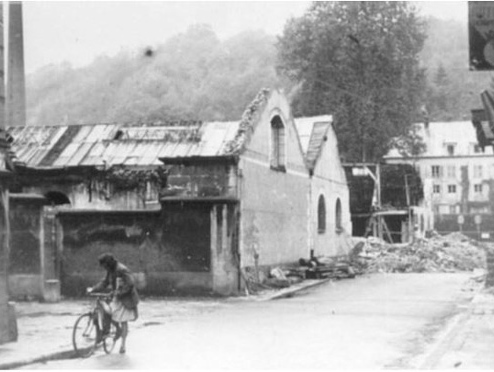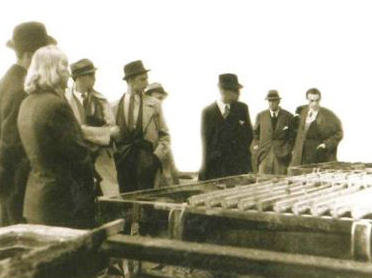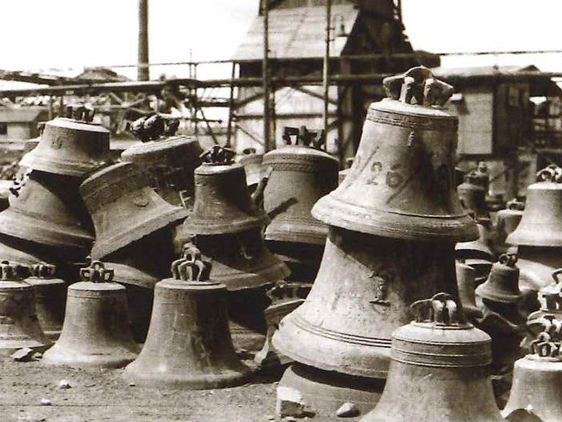Episode 7:
The inter-war period
the advent of industrial electrolysis
Before the First World War, Vieille Montagne had 7 mining and metallurgical sites in Belgium, 11 in France, 8 in North Africa, 3 in Germany, 2 in Sweden, 4 in England, 4 in Italy and 2 in Spain, as well as commercial consignees all over the Planet, from Mexico to Havana, Tokyo to New York, via Alexandria, Moscow and St. Petersburg!
Several years later, the two largest producer countries, Belgium and Germany, were severely affected by the war, as was France, where the productive potential of the Viviez-Penchot plant in the Aveyron region had been restricted, as activity there had been pushed to its limits to supply the national defence forces with extra-pure zinc (alloys including brass for munitions) and sulphuric and nitric acid (explosives)

The world zinc market was in a state of upheaval, both in terms of ore and primary zinc, marketed mainly in Europe and North America. Indeed, during the war, it was in the United States that zinc underwent its most striking evolution, where production tripled in modern new mechanised plants, some of which were already using the new electrolytic process.
From thermal transformation to electrolytic zinc
At Vieille Montagne, the redevelopment crisis of 1919 to 1921 was very severe as it was marked not only by a decrease in production (*) but also a decrease in prices, profits and employment. At the same time, competition in the North and Pas de Calais regions of France (Compagnie Royale Asturienne des Mines, Pennaroya) was rapidly reviving as each company was rightly focusing on significant development of demand, as demonstrated in America. In any case, company directors in the sector could now make a strong and clearly proven argument: their activity had obviously become crucial for manufacturing arms and explosives!
(*) from 68,000 tons in 1913, French production had decreased to below 19,000 tons by 1920!
So World War I had shown the directors of Vieille Montagne that it would perhaps be wiser to strengthen their activity in the south of France rather than nearby the large ports on the North Sea, which, due to their strategic importance, had become strong factors of power in the case of conflicts and therefore key targets during bombardments!
This relocation would be accompanied by a technological transformation that was to be decisive for the future of the company.
Since 1918, the Vieille Montagne managers had been considering which new orientation to give to this site, but they waited 3 years, and in a healthier context, things gradually became clearer!
At the plant in the Aveyron region, the old process known as the “dry” process had been constantly improved between 1871 and 1917. But although the production volumes and profitability had increased considerably, the engineers were sure and certain on the eve of the war that the potential gains would be very restricted in the future and, despite the efforts made, working conditions could not remain as they were.
So in 1922, Vieille Montagne decided to take a risk on massive investment in industrial electrolysis. For the first time in Europe, this process based on electric energy was being used (*) in the transformation of zinc ore in an ultra modern plant, and the Viviez site was chosen for this!
(*) This process was copied in 1929 by the Norwegian subsidiary (Der Norske Zinkkompani) of Vieille Montagne’s main competitor, the Compagnie Royale Asturienne des Mines. It was envisaged in the Pyrenees in 1925 by Pennaroya, but the idea was rapidly abandoned.
In order to meet its energy needs, Vieille Montagne had to build dams on the river Lot and hydro-electric plants to supply electricity for its electrolysis.
But the adoption of the new process engendered some difficulties. Management at the plant worked in successive adaptation phases between December 1921 (tests on what was called “small electrolysis”) and the beginning of 1928, when the thermal process was completely abandoned.
Finally, the purity of zinc obtained and the improvement of yield and working conditions were so impressive it was decided to use the French experience to install the innovative process in 1935 at the Vieille Montagne plant in Baelen, in the Campine region of Belgium.
(See the 1st photo above: Electrolysis process in Balen - 1935)
(More information on this can be found in the book entitled “L’adoption du procédé électrolytique par l’usine Vieille Montagne de Viviez (1922-1931)”(The adoption of the electrolysis process by the Vieille Montagne plant in Viviez (1922-1931)”) by A. Boscus, published by Editions Siècles – Cahiers du Centre d’Histoire “espaces et cultures” in 2005)
Industrial growth that boosted the zinc market
At the end of the First World War and after the 1929 crisis - two events that significantly destabilised industry and transport - worldwide consumption of zinc enjoyed a phase of strong and lasting growth, due to new uses of the material. One such new use was the fantastic success of galvanisation, making it possible to effectively protect steel in industrial conditions. Galvanisation experienced constant growth in the United States (infrastructures, plants, shopping malls….).
(Editor’s note: the process was reproduced in the same manner recently with the fantastic growth of economies in Asia including China, where growth in zinc consumption soared from the 1990s. We will come back to this.)
The zinc market also benefitted from growth in the use of cars, because zinc is used to manufacture tyres and also in the many moulded parts made using zamak1 (carburettor, window and headlight surrounds, door handles, windscreen wipers, protection grids and radiator caps, etc.).

Second World War: Vieille Montagne opts to continue production from 1940 to 1945, but under certain conditions.
In 1939, drawing inspiration from the experience of the First World War, Vieille Montagne and Union Minière (a company created in 1906 to exploit copper mines in the Congo and Haut Katanga), decided to maintain its activity in France if Belgium was occupied. As a precautionary measure, stocks of metal were stored in Antwerp, Bruges, Ostend and Le Havre, so that they could be rapidly evacuated in the case of an invasion.
(Photo: Destruction of the Bray-et-Lû factory - 1941)
The roll-out of the German troops was beyond all expectations. In just a few days, Belgium was occupied and France capitulated. The occupier immediately set about reopening the plants and wanted to appoint German engineers to manage them. Although Belgian industry refused to work for Germany, there was an imminent threat of famine and deportation of workers. Therefore the only possible option was to start work again under German control, striving to refuse production of war material.

So the Belgian non-ferrous industrial plants continued to produce, but they applied the following principles:
- No specific production outside of the activity previously conducted during peacetime,
- Accept orders while resisting and carry out orders as slowly as possible.
- No production of arms or munitions
- Do not act with a view to financial gain.
(Photo: Visit of the Balen factory by German occupiers - 1940)

Vieille Montagne applied these rules notably at its plants in Baelen and Viviez.
By way of anecdote, in all the European countries they dominated and with a view to supplying their plants, the Germans recovered metal by any means possible, especially non-ferrous metals. This is why they seized and disassembled church bells. In less than three years, Belgium lost two thirds of its church bells, leaving this heritage greatly depleted and church belfries all over the country silent…
(Photo: stock of bells in Hamburg)
Before finishing this 7th episode of the Vieille Montagne Saga, I have to tell you an anecdote that moved me and that very few people know of.
It happened on the VMZINC stand at the BATIMAT trade show in 2013. Amidst architects and roofers, I was presenting our products and speaking with clients when I was shown an older man who wanted to speak to me. He introduced himself and straight away said to me in a very respectful manner: “dear sir, I owe my life to your company. I have great respect for Vieille Montagne!”. I thought he was a former roofer who loved our material and had perhaps been helped by one of our technicians.
But he continued: “if you have a few minutes, I’d like to tell you my story”. And so he began to tell me of the 1940 exodus, his mother who fled Belgium and found herself, pregnant with him, walking the roads of France in the middle of July to escape the Germans. She went from town to town, and happened to end up in Aubin in the Decazeville basin, where she was taken in by the Director of the Vieille Montagne plant and his wife. She gave birth to this little Jewish boy who was to spend most of the war hidden, with a few other children, with this discreet family who had accepted to run all the risks.
He held out his business card and left just as he had arrived, leaving me feeling pensive and proud to work for this company.
In the next episode, I will tell you about Vieille Montagne at the end of the Second World War and the unshakeable optimism of its managers, who were fully determined to pursue the redevelopment of their company.